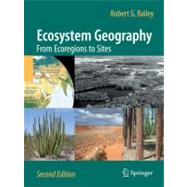
What is included with this book?
| Foreword | p. v |
| Preface to the Second Edition | p. vii |
| Preface to the First Edition | p. ix |
| Introduction | p. 1 |
| The problems | |
| Where are we headed? | |
| The ecosystem approach | |
| Classification of land as ecosystems | |
| Ecosystem-based planning | |
| Predicting effects | |
| Levels of integration | |
| Structure: the basis of classification | |
| Need for recognizing ecosystems at various scales | |
| Ecosystem geography | |
| Do we know enough? | |
| Need to delineate ecosystem boundaries | |
| The genetic approach | |
| Scale of Ecosystem Units | p. 25 |
| Site | |
| Landscape mosaic | |
| Ecoregion | |
| National hierarchy of ecological Units | |
| Chapter 3 | p. 29 |
| Gestalt Method | |
| Map-overlay Method | |
| Multivariate clustering Method | |
| Digital-image processing Method | |
| Controlling factors Method | |
| Analysis of controlling Factors | |
| Role of Climate in Ecosystem Differentiation | p. 41 |
| Hydrologic Cycle | |
| Landforms and erosion Cycles | |
| Life Cycles | |
| Fire Regimes | |
| Plant Productivity | |
| Litter and Decomposition | |
| Controls over the climatic effect and Scale | |
| Macroscale: Macroclimatic Differentiation (Ecoregions) | p. 53 |
| Causes of ecoregion pattern | |
| Latitude | |
| Continental position | |
| Elevation | |
| Macroclimatic differentiation in review | |
| Ecoclimatic Zones of the Earth | p. 83 |
| Criteria used in delineating ecoregion levels | |
| The domains | |
| The provinces | |
| Ecoregion maps | |
| Ecoregion boundaries | |
| Local contrasts within zones | |
| Relationship to other ecoregional zoning systems | |
| Ecoregions of the United States | p. 93 |
| 100 Polar domain | |
| 200 Humid temperate domain | |
| 300 Dry domain | |
| 400 Humid tropical domain | |
| Mountains with altitudinal zonation | |
| American ecoregions in Review | |
| Ecoregion Redistribution Under Climate Change | p. 115 |
| Long-term climate change | |
| Use of the Köppen climate classification to detect climate change | |
| Summary | |
| Mesoscale: Landform Differentiation (Landscape Mosaics) | p. 27 |
| Causes of landscape mosaic pattern | |
| Principal landform classes | |
| Geologic substratum | |
| Levels of landform differentiation | |
| Landforms in review | |
| Microscale: Edaphic-Topoclimatic Differentiation (Sites) | p. 145 |
| Causes of site pattern | |
| Slope-aspect and ground conditions | |
| Geologic differentiation | |
| Topoclimate-soil moisture ecoclimatic grid | |
| Human influences on ecosystems and present-day systems | |
| Applications of Ecosystem Geography | p. 169 |
| Determining the mapping units | |
| Relationships | |
| Examples of useful correlations and applications | |
| Significance to ecosystem management | |
| Significance to research | |
| Conclusion | |
| Summary and Conclusions | p. 195 |
| Mapping criteria | |
| Boundaries | |
| Management hierarchies and ecosystem hierarchies | |
| Human dimensions | |
| Ecosystem services | |
| Appendix Ecoregions of the Oceans | p. 203 |
| Polar domain | |
| Temperate domain | |
| Tropical domain | |
| Shelf | |
| Glossary | p. 207 |
| Further Reading | p. 219 |
| Bibliography | p. 221 |
| About the Author | p. 241 |
| Subject Index | p. 243 |
| Table of Contents provided by Ingram. All Rights Reserved. |
The New copy of this book will include any supplemental materials advertised. Please check the title of the book to determine if it should include any access cards, study guides, lab manuals, CDs, etc.
The Used, Rental and eBook copies of this book are not guaranteed to include any supplemental materials. Typically, only the book itself is included. This is true even if the title states it includes any access cards, study guides, lab manuals, CDs, etc.